
Having a plan or an outline before you start is the key to success in any writing. But is vital if you intend to write articles optimized for SEO or even a blog post.
You need to order your thoughts to be able to craft a highly informative piece.
The critical part of a great post or article is the amount of new and relevant information you can give readers.
If you are submitting an article to an external website as part of a digital marketing campaign, you must provide extremely high reader value.
Quality article writing
However, unlike tapping out a quick personal blog post, when you write excellent articles for SEO, they need to be structured to meet the needs of both readers and search engine crawlers.
If readers can’t find your article, they won’t read it. A good article writer knows that content marketing is about trying to please both search engines and readers.
It involves wearing two writing hats. First, you need to write in a style that is easy to read yet highly informative to keep a reader interested.
Second, you need to pay attention to SEO (Search Engine Optimization) so that your piece of content will hopefully appear in search results in a high-ranking position.
If you can achieve a balance between the two, you will be writing high-quality content for both people and machines. Writing a great article always starts with your topic and keyword research.
Researching your article ideas
If you decide or need to write something about shoes, you might research the latest fashion trends or sales data to help with the topic of the article.
You could take a more focused angle and write about children’s shoes and how expensive it is to keep buying new shoes for growing feet.
There are probably hundreds of topic ideas related to shoes. But after narrowing down your subject choice, make some notes of your key points.
When you create content, it is a good idea is to make a short and to-the-point list of six or seven and use them as your possible paragraph headings.
You can flesh out the details when you start writing your first draft. Now that you have a basic outline for an article that will inform and interest readers, it is time to plan your SEO so that people can find it.
Doing your SEO research
Here’s the important part when you write articles for SEO. It all starts with finding a target keyword before you even think about beginning to write a blog post or article.
But using the example above, shoes would be a terrible choice for a keyword. You would never stand a chance of ranking on Google for a one-word keyword like this.
What you need to find is a long-tail keyword that is less competitive and clearly targeted. Perhaps, shoes for growing feet, or how to save money on kids shoes.
Ranking for single-word keywords is impossible. But for a short phrase or long-tail keyword, it is much easier to rank high and to get a lot of organic traffic to your article web page.
Finding a suitable main keyword is vital to the potential success of your new article.
You can research using Google and look at the number of results there are for your keyword ideas. The less, the better because it will be more narrowly targeted.
Once you have decided on your keyword, look at the top ten pages in your Google search.
Now go to each page in turn and quickly scan read each article.
These will give you many more ideas to write about. It will also give you a rough guide regarding the total word count you should be aiming for.
Also, look at the type of images and which article gained the most comments.
Of course, you can’t steal the content. But you can get a lot of great blog post ideas by looking at what topics the top ten pages cover.
With the information, your content strategy goal is to use your writing skills to write an even better article than all ten.
One last SEO task. You need a list of semantic keywords.
These are short phrases or word combinations that are related to your topic. They are usually only verbs, nouns, and adjectives. Also, consider plural and singular variations.
Look again at the top ten articles and note down common phrases they use.
You might find shoe size, summer sandals, one size larger, hand-me-downs, buy on sale, and real leather on several pages.
Write a quick list of at least ten, but preferably twenty semantic phrases.
You need a fantastic title to attract interest
The last step in your planning is to find a great title.
It must include your main keyword phrase, along with a reason to read your article. It should be as close to, but no more than sixty characters long.
How To Spend Much Less On Shoes For Kids Growing Feet
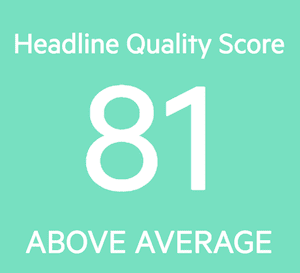
I tested this title on a headline analyzer, and it scored very high, so it must be a good one.
One of the common mistakes some article writers make is only to have one title. You need two.
The first is for the main title and usually also the URL. The second one is for the SEO title, which will be displayed on Google listings and also on social media shares.
All you need to do is re-word your title a little.
Spend A Lot Less Money On Shoes For Kids Growing Feet
Writing a good title is as important as writing a good article.
My SEO article notes
Before I began writing this article, I made my plan exactly as I have explained above. Here are my notes.
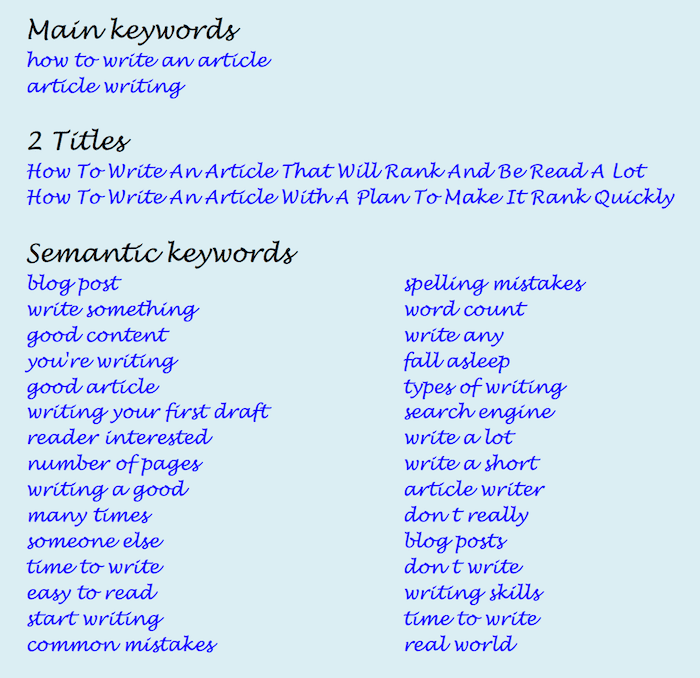
I am fortunate because, as I write a lot, I use Semrush to research my keywords and semantic ideas.
It took me less than ten minutes to list my SEO and content ideas because Semrush can extract all the information from the top ten ranked pages in less than a minute.
Writing your article
Now it is time to write, using your notes.
Group some of the semantic keywords under your proposed paragraph headings. You don’t need to use all of them.
Choose the ones that best fit what you’re writing about and that might work well with your calls to action.
Start writing your article in your style, but try to incorporate your semantic keywords as you go naturally. Don’t forget that you’re writing for readers.
The only thing you should be careful with is not to use your primary keyword too many times in your text. It is called keyword stuffing in SEO speak, and it will reduce your ranking chances considerably.
Once you’ve written your text, do a thorough grammar check, and check for spelling mistakes. Now read your post or article and check that it is perfect.
If you have the possibility, also get someone else to proofread your text before hitting publish.
Once you publish, check your Google ranking in a week or two, and see how well you did. If you have access to SEO analyzer tools, you can always make a few edits to improve your article.
Post publishing report
One big advantage I have with using Semrush is that I can quickly check if I have covered all the SEO basics in a new article.
For this one, here are the results of two reports I ran a little while after publishing.
First is the keyword report.
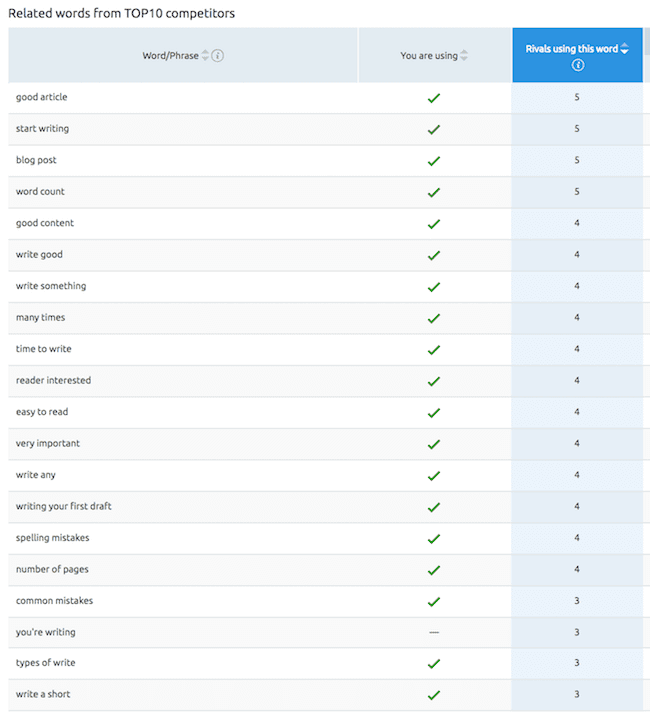
As you can see, I missed one. But a quick edit is all I need to do to fix this.
The second report is for overall SEO.

All green lights!
So I have done all I can. Now I need to wait for Google to crawl this new article and hope it gets a decent ranking and lots of readers.
Summary
Before you write any new article or blog posts, don’t write anything until you have done your research and drafted an SEO plan.
If you are publishing posts on your site, you are in control. If you can, use SEO tools to help achieve higher rankings, a lower bounce rate, and with it, more readers and site traffic.
However, if you are submitting articles to external sites, you can improve your chances of being accepted by helping the webmaster.
Along with your terrific article text, include two titles as well as your 160-character SEO description.
Online, as in the real world, those who plan well succeed more often.
My recipe for how to write articles for SEO is not always guaranteed to win the number one ranking on Google and Bing.
But it does work in getting more than fifty percent of my articles on the first two pages of a Google search for my keywords. That is more than enough to get a steady stream of organic traffic and readers.
Related reading: How You Can Get An Article Published Online Or In A Magazine
Share This Article
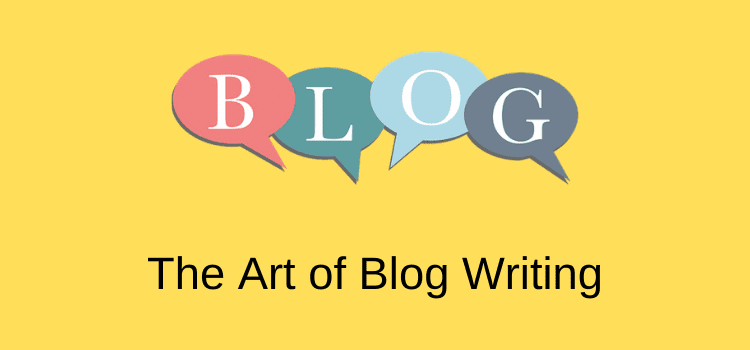

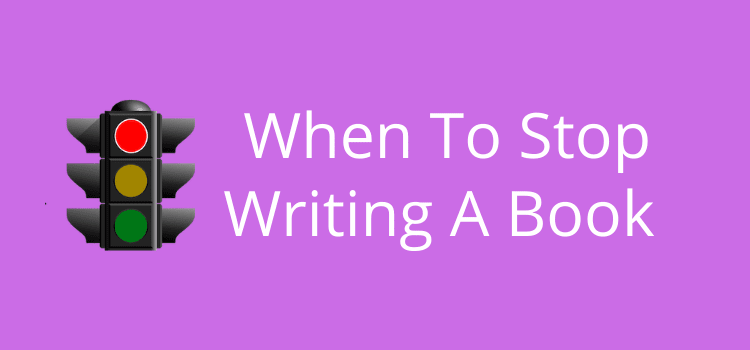
I’m just thinking about writing some articles, thanks for the very informative piece.